5 Fiery Firewood Pests
5 Fiery Firewood Pests
Nothing feels better on a cold day than staying by the fireplace with a book and a warm beverage. Some homes are equipped with electric fireplaces that don’t require any more work than pushing a button, while other houses have a true fireplace that requires the residents to bring in firewood to strategically place inside the fireplace and light manually. While this is an effective way to ensure that the house will warm up soon, it can be a major hassle if the stack of firewood outside attracted some wood-loving pests.
There are a few categories of pests that can be found in wood piles. One is the group that actually eats through the wood, which can cause problems for obvious reasons. Another is the sector of insects that nest inside the pile, mainly for the warmth and dry shelter. A third category includes the pests that infested the wood before it was chopped up, and are still inhabiting the pile unbeknownst to the homeowners. No matter what category of pests invaded your firewood pile, it can be quite the surprise when they venture out of the wood and go towards the daylight from the windows! Any common insect can technically be found in a firewood pile since it’s outdoors, but let’s look specifically at five pests that seem to make it a habit to live inside idle piles of firewood before the pieces fulfill their purpose in the flames.
Bark Beetles
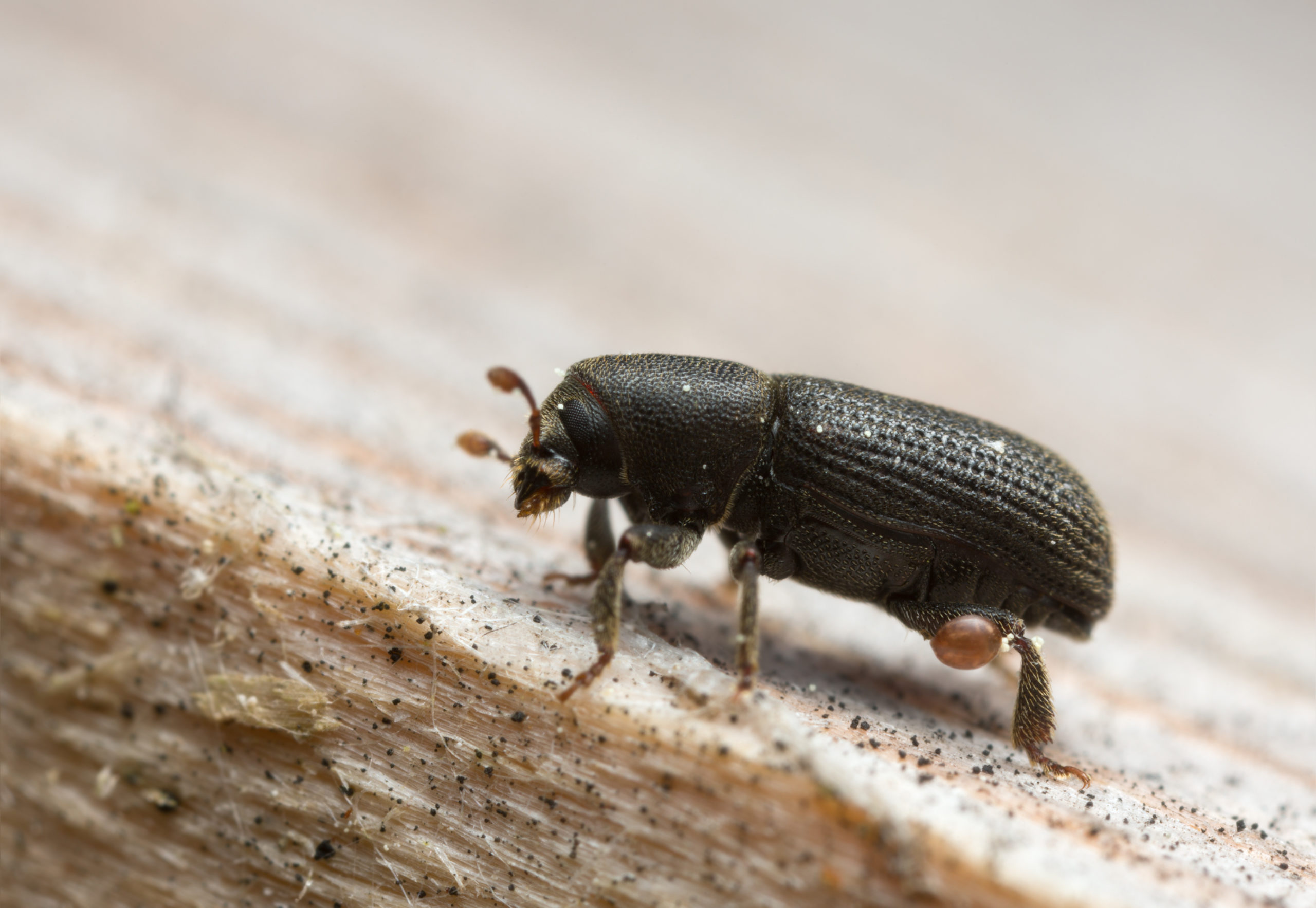
With a name like “bark beetles,” it should come as no surprise that these pests love to live in wood of all kinds. They prefer dead or dying trees, as the wood is easier to bore into and inhabit. Green wood seems to be their favorite due to the moisture content and lack of seasoning since it was recently cut. Plus, they don’t have to compete with as many other insects for the space, as compared to a healthy live tree. Bark beetles are less than 1/8 of an inch long, and are black or brown. This makes it even more difficult to catch them, as they blend in with the bark very easily. They also lay their eggs in the tree and continue to burrow deeper after doing so. Since they are so small, their strength is definitely in their huge numbers as they invade in hordes. Bark beetles are capable of killing entire trees if they are left alone long enough, proving that they are definitely small but mighty. Specifically, pine trees can gradually be drained of life with a bark beetle infestation, which is exactly why you don’t want them anywhere near your firewood or the trees used as the source.
Prevention Tactics: If you don’t already, covering your firewood pile with a tarp or plastic of some kind is a great way to keep out pests in general. It may not completely prevent bark beetles since they are so persistent when the wood is in its pre-chopped form, but it can keep them from invading once it’s already cut up. It is also a good idea to give each piece of firewood a quick shake before bringing it inside. If any bark beetles have been inhabiting the wood, they should fall off when the wood is disturbed.
Termites
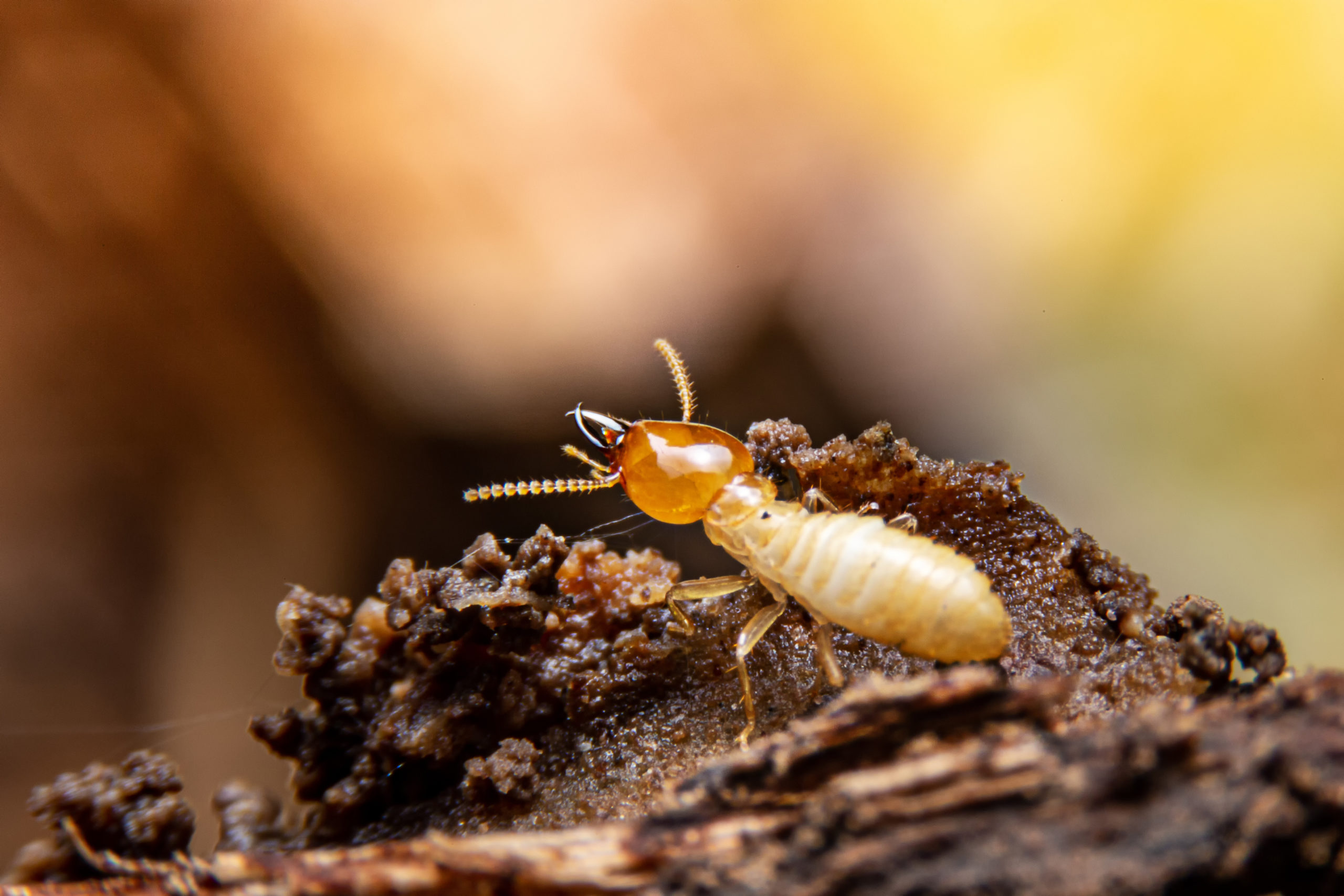
We couldn’t have a wood-centered blog without bringing up our old frustrating wood-loving pests, the termites. Surprisingly, the termites don’t start out in the firewood itself when they invade. They actually nest in the soil below the pile, the colony remaining hidden throughout the rich dirt. The workers will eventually tunnel up through the soil and into the wood since termites craft their tunnels vertically more than horizontally. Termites actually eat the wood they tunnel through, unlike carpenter ants, as they love the cellulose content found in every type of wood. The easiest way to see where the termites are tunneling is to look at the outside of the tunneling site. Termites construct mud tubes, lines of packed dirt, on the outside of the wood. On an infested firewood pile, there will be mud tubes traveling upwards in various directions as the workers break off into different directions. The good news about termites is that they won’t jump from a separate wood pile to the house (unless the swarmers scout out the house first), which is why it is crucial to keep the firewood pile away from the house. If the wood is leaning against the home, the termites can tunnel straight from the firewood to the house without breaking a sweat, if termites even sweat.
Prevention Tactics: The worst event that can come out of termites infesting the firewood pile is if they turn to the actual house for their next home. Make sure that the firewood pile is stacked away from the house and does not touch it at all, since this is an easy access point for termites. Also, keep the stack elevated above the ground. Since termites burrow and build up, they will have a more difficult time doing this if the firewood is not physically touching the ground.
Carpenter Ants
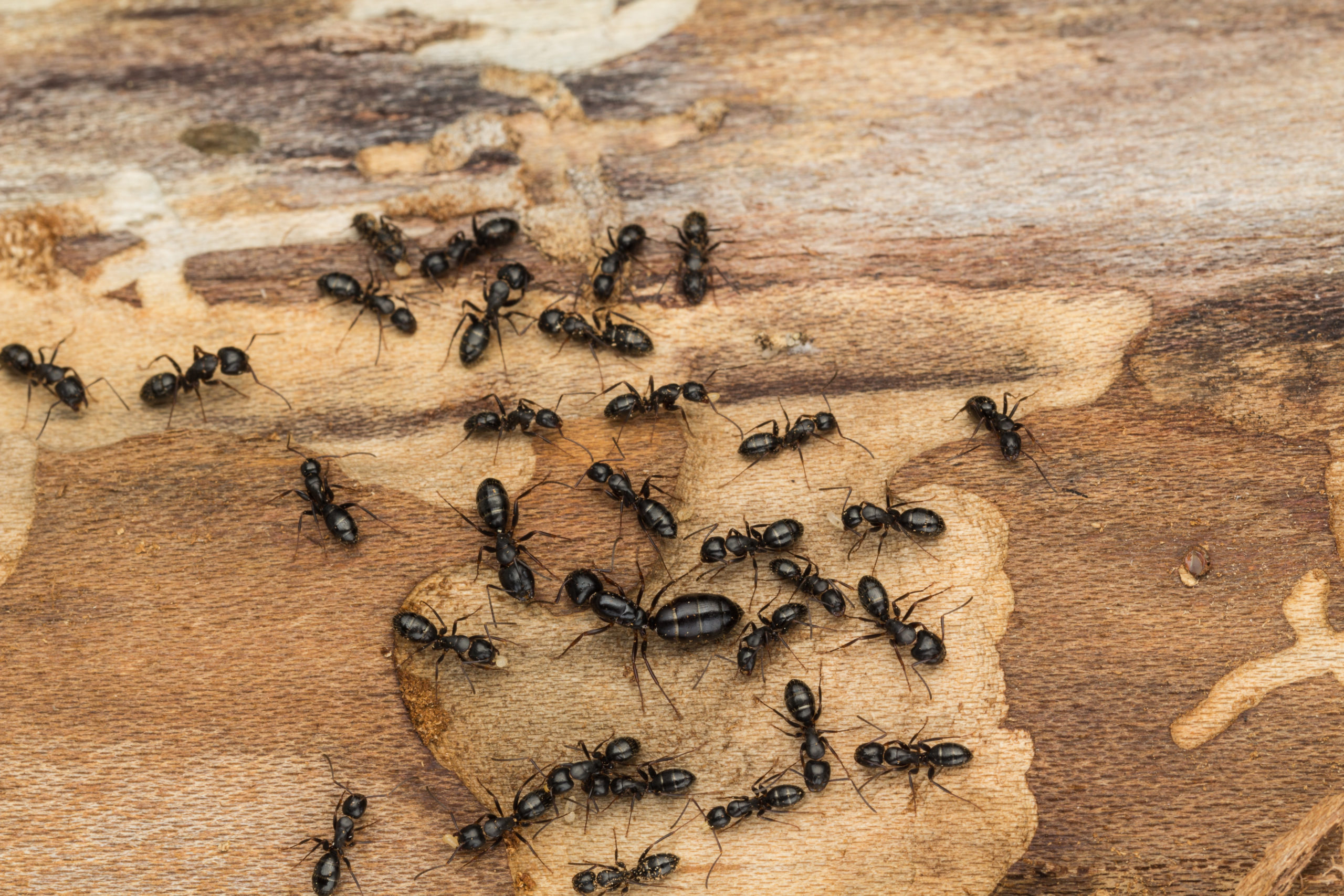
Speaking of carpenter ants, they are another unsurprising potential firewood pest. As opposed to termites, carpenter ants do not actually eat the wood they efficiently tunnel through. They just hollow out their nests in damaged wood, spitting out the carved wood in a sawdust consistency. Carpenter ants favor moist wood, which may not be found in a protected stack of firewood, but they can be a larger problem after a major rainstorm. This is also why carpenter ants build more nests outside than inside, as they are more likely to find wood with moisture damage and food. They can be either black or red in color, like most ant varieties, but the defining feature of carpenter ants is how closely they stick to a source of wood. Their galleries inside the wood go along the grain, so it is easy to track where they are traveling. While they prefer to be outdoors, carpenter ants can spread out to other parts of the home once inside if the warm temperatures give them the energy spike needed to invade further.
Prevention Tactics: Since carpenter ants love moisture and only invade damaged wood, the best way to prevent them is by keeping the firewood as dry as possible. Keep the stack elevated above the ground, since ants can just crawl into it otherwise. Also, keep the firewood under a sturdy covering of some kind. This will protect it both from the rain and from invading ants after the storm has passed.
Long-Horned Beetles
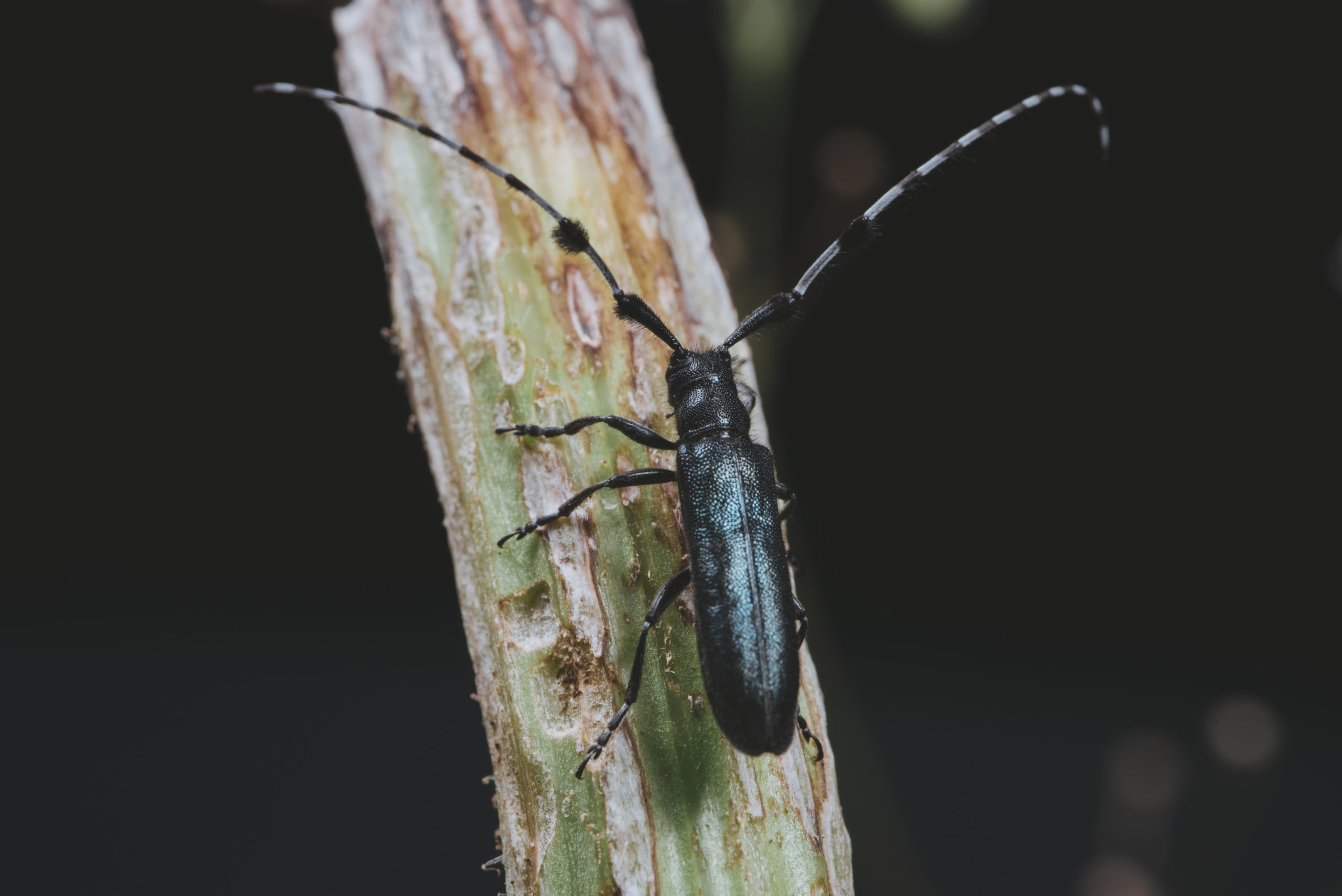
Another common wood-boring beetle, long-horned beetles only eat natural wood found out in nature. They will not even try to eat finished wood, but this means that firewood piles are susceptible to an invasion. These beetles can be 1/2 an inch to 1 1/2 inches long, and are known for their long legs and lengthy antennae. They can live for about a year if the conditions remain temperate and they have adequate moisture. Long-horned beetles lay their eggs inside the wood so that their larvae have an immediate food source. Despite their often large size, long-horned beetles craft tunnels in wood that are just the width of a pencil. While they will invade just about any natural wood, these beetles seem to prefer ash, hickory, and oak trees the most. You can tell that these beetles are the culprits of the firewood infestation if you find holes the width of a pencil and sawdust on the exterior of the pile. If the infested firewood is brought inside, the long-horned beetles may emerge due to the warmth of the environment. They are harmless to us, but that doesn’t mean we want a bunch of wood-loving beetles loose in our houses.
Prevention Tactics: Similar to bark beetles, the best way to prevent long-horned beetles is by elevating the firewood stack and keeping it covered as much as possible. This will also protect the firewood from the weather elements, which would then make the wood more appealing to the beetles. Check the wood for any holes or shavings before bringing inside, as this is a sign of infestation.
Black Widows
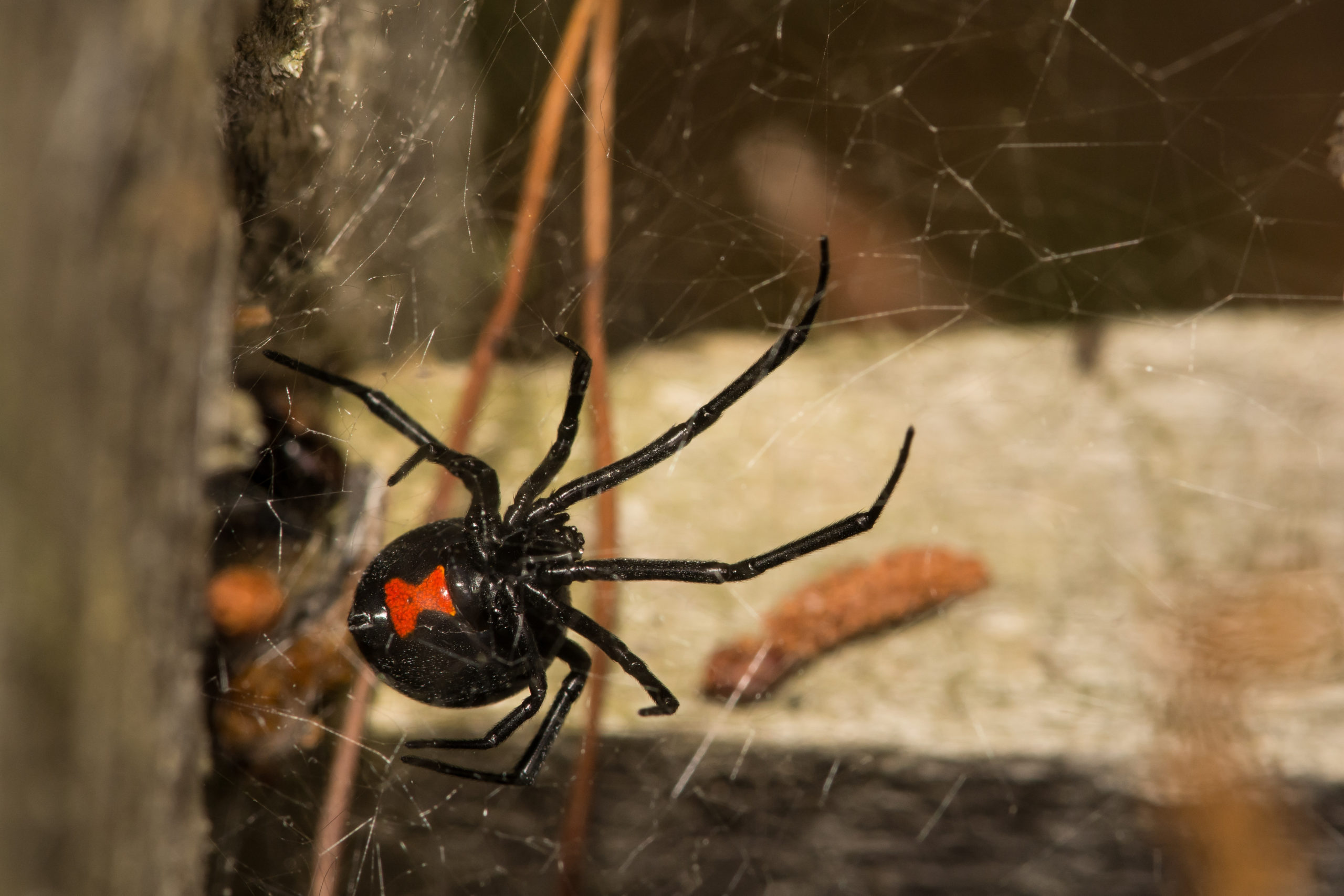
If spiders could go to a typical party, they would be part of the crowd that only stays near the snack table. This is because spiders will live where they have a constant food source in the form of small insects, whether or not the spider stays in a web it spins. Black widows are the kind to create an intricate web that they will then stay inside as they wait for their prey to venture near. In a pile of firewood, black widows have two major reasons to stay: food and shelter. They like to stay warm and dry, which is highly possible in firewood, and they have plenty of food to choose from if there are already pest problems there. As an added bonus, the bottom of the firewood pile won’t be disturbed very much. Black widows like to be isolated as much as possible, which is great since their venomous bite is enough to put a human in the hospital. They would much rather bite beetles, ants, and other small pests, but that does not stop a territorial black widow from protecting its web from anything larger trying to get some firewood.
Prevention Tactics: If you are reaching deep into the firewood stack, we recommend wearing thick gloves to prevent any annoyed pests from biting. Since black widows are expert hiders and like to stay as far from us as possible, they often surprise us with their hiding spots. Use caution when grabbing firewood, and examine each piece for spiders and egg sacs before bringing them inside. If you are bitten by a black widow, seek medical attention immediately. The infested firewood is the least of your worries when a black widow is angry at its home being disturbed.
Stay Warm This Fall and Winter With Pointe Pest Control
If you have been storing and using your own firewood for years, you likely already know the tricks to keeping pests out of the pile. But it is still worth stating that you should never spray firewood with insecticides or bug sprays of any kind. This will not only compromise the integrity of the wood when it burns, it can also release the chemicals in a vapor throughout the house, which it not good for anyone to inhale. Instead, call Pointe Pest Control to inspect and treat the areas around the firewood stash! Our team is dedicated to keeping our clients’ homes pest-free in every season, and we are happy to solve your pest problems during the cold weather. Contact us for more information on how our services can keep your home free of pests trying to sneak their way into the warm shelter.
Citations
Bayly, J. (2018, November 14). Bugs in firewood? Here’s what you need to know. Hello Homestead. Available at https://hellohomestead.com/bugs-in-firewood-heres-what-you-need-to-know/ (Accessed on November 4, 2022).
Gibb, T.J. (2018, April). Insects in firewood. Purdue University Entomology. Available at https://extension.entm.purdue.edu/publications/E-67/E-67.html (Accessed on November 4, 2022).
Jesse, L. (2008, January 9). Firewood insects. Iowa State University Horticulture and Home Pest News. Available at https://hortnews.extension.iastate.edu/2008/1-9/FirewoodInsects.html (Accessed on November 4, 2022).
Kraft, S. & Pinto, L. (2017, October 16). Firewood pests. Pest Control Technology. Available at https://www.pctonline.com/article/firewood-pests/ (Accessed on November 4, 2022).
Thompson, M.Y. (Dr.). (2004, December 25). Bark beetles from firewood?. New Mexico State University. Available at https://aces.nmsu.edu/ces/yard/2004/122504.html (Accessed on November 4, 2022).
Townsend, L. (1997, November). Firewood insects. Entomology at the University of Kentucky. Available at https://entomology.ca.uky.edu/ef626 (Accessed on November 4, 2022).
Request a Free Quote Today
(We do not share your data with anybody, and only use it for its intended purpose)
